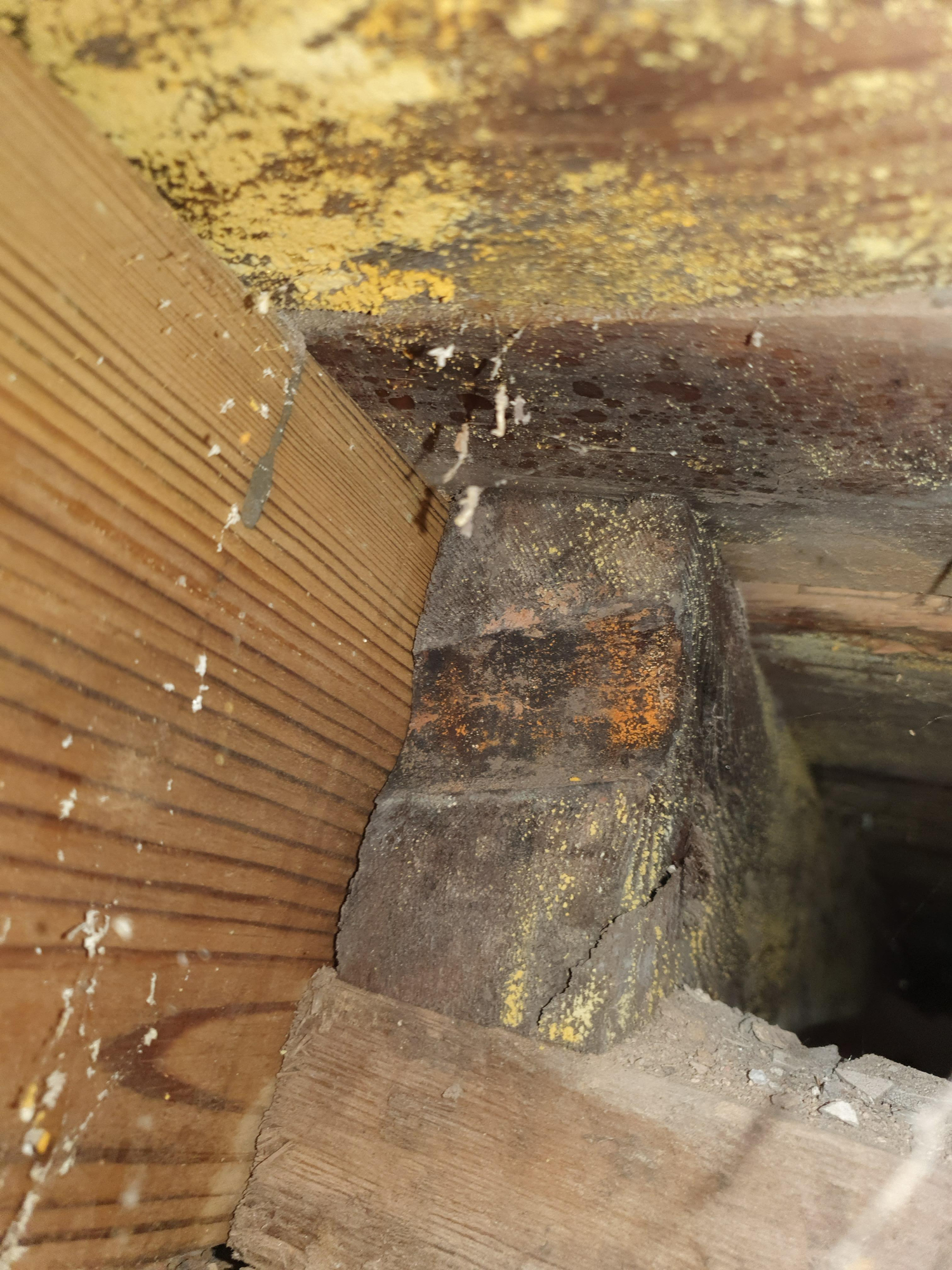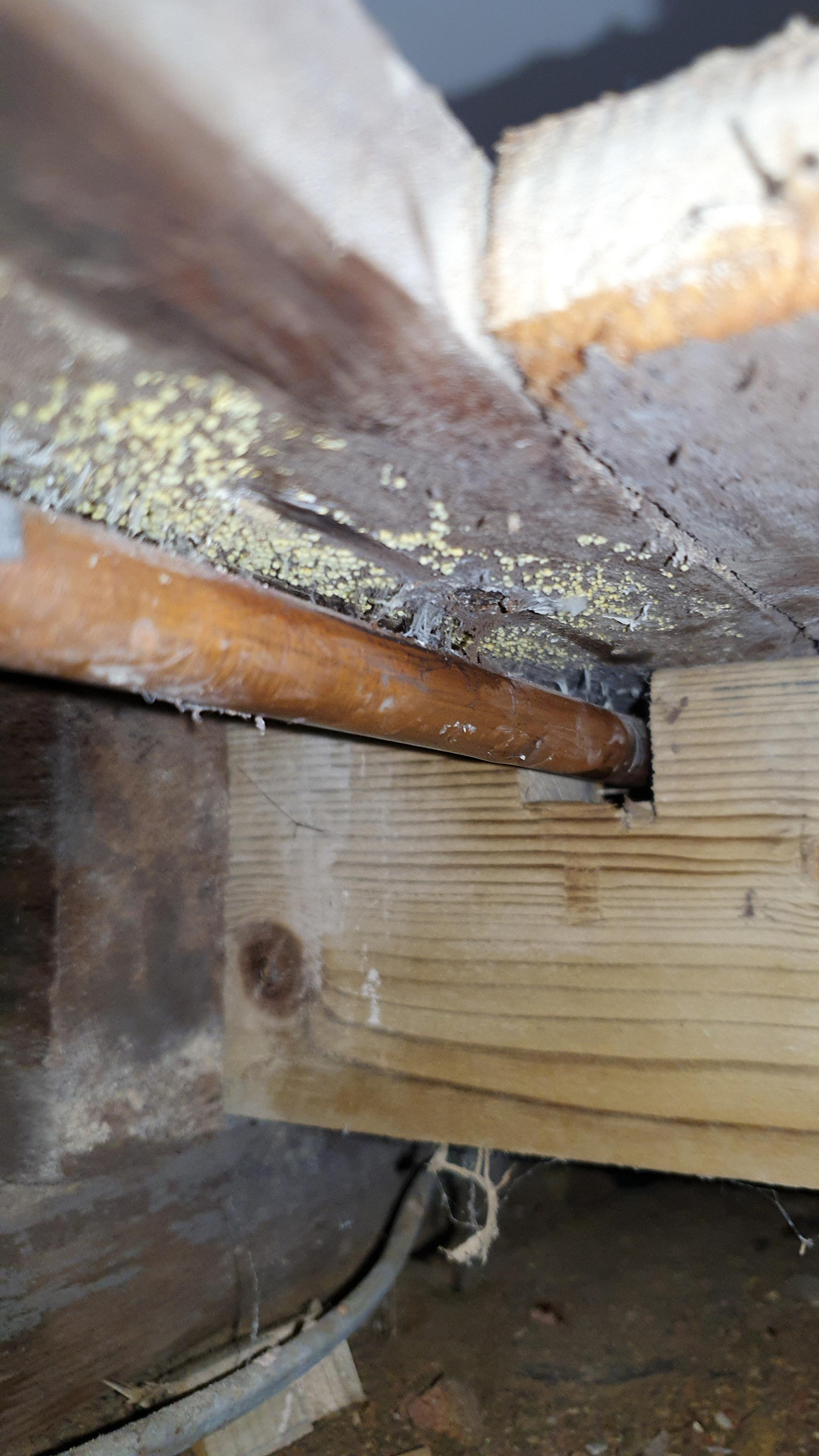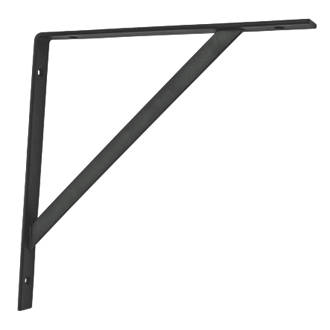We’d like to remind Forumites to please avoid political debate on the Forum.
This is to keep it a safe and useful space for MoneySaving discussions. Threads that are – or become – political in nature may be removed in line with the Forum’s rules. Thank you for your understanding.
The MSE Forum Team would like to wish you all a Merry Christmas. However, we know this time of year can be difficult for some. If you're struggling during the festive period, here's a list of organisations that might be able to help
📨 Have you signed up to the Forum's new Email Digest yet? Get a selection of trending threads sent straight to your inbox daily, weekly or monthly!
Has MSE helped you to save or reclaim money this year? Share your 2025 MoneySaving success stories!
Severe water damage in kitchen after radiator power flush
Comments
-
Most likely it's as you suspect - that gulley will be the source, one way or another.Is that small underfloor void ventilated to the outside?0
-
Quick update for those that are interested, my drainage and plumber guy came over today and said both the drain and the gully are fine. The gully was slightly blocked which he cleaned out but there was nothing there to suggest ingress of water.Furthermore, when looking in the area that was wet, he noticed that it was primarily the wood that was damp and not the floor, indicating to him that it couldn't be ingress of water from the ground since the ground too would be wet.The only likely cause of the water remaining would have to be a leak. So he lifted more floorboards to trace the flow of water from the pipes he could see and junction coming off the new copper that was laid 6 years ago, to some old piping which is layed towards the kitchen units, and then out into the garden. Long story short, my plumber says the pipe to the garden rear tap has a leak. He cut out a part of the floorboard where this pipe meets the kitchen under my hob and the pipe was very wet so the root cause has been identified.Now there are 2 ways to stop this leak:1. Cut and cap the pipe in the exposed floorboard area however this will mean no working rear tap in the garden but it will stop the leak and I could always use the kitchen sink tap if I needed to. It is a terraced house with a paved garden so don't see a need for the tap.2. Take out the kitchen units, run a new pipe from existing copper, to a new tap, using new plastic piping. Take the time to replace all the effected floorboards/joists.Now I am wondering what I should do.Option 2 seems the most sensible in terms of doing the job properly however there is real risk in damaging the kitchen in doing so. I've spoken to a few kitchen fitters and due to the heavy quartz worktop, it may break when pulling the units out, if it isn't supported properly, or if the kitchen wasn't installed properly in the first place.I'm wondering if it's possible to just cut and cap the pipe, maybe use dehumidifiers to dry out what can be seen and leave it the way it is.Thoughts?1
-
You found the case! That's excellent!It's going to be hard for anyone to recommend what to do from this side of the screen. Yes, quartz worktops are brittle, but also pretty strong. It really depends on how many units you need to remove - how unsupported it will be. You don't want unsupported ends, and you don't want unsupported cut-outs (like the hob area).Does the supply pipe come in to the kitchen in the left corner as you look at the cooker? If so, what unit do you have there - just a normal base? A tall housing? Or, where does this pipe enter the kitchen? Target that point if it's easier.If a tall housing, that won't be supporting the worktop, so haul it out... Carefully. Cut the pipe there and extend it to provide a new garden tap (always useful).If it's base units, I'd leave the very corner one, but remove a 'middle' one - unscrew it, retract its legs, pull it out - the worktop will remain supported on either side. Cut, extend and ditto.If you really really don't want to do this, and if you really really can manage without a garden tap, then just cap.
0 -
How bad is the floor? If the boards and joists are weak or rotten that seems important to fix properly.
But a banker, engaged at enormous expense,Had the whole of their cash in his care.
Lewis Carroll1 -
The joists are wet but there is no rotten as far as I can see. The floorboards however are drenched in that corner and flaking off. There is mold on the underside of the floorboards, across the floor to be honest and a joist on the opposite end, by the right hand side kitchen wall seems to be rotten.The following pictures explains what we found.The Black lines are my new copper pipes. The Red line is a copper pipe junctioning off the new copper pipe, going towards the hob unit. This pipe is wet directly when it enters the joist under the hob but not before it.
 You can see mold on the underside of the floorboard that's been taken up. Here are some more pictures:This is what it looks like underneath where the black pipes are. The joist you can see here is the joist against that wall.
You can see mold on the underside of the floorboard that's been taken up. Here are some more pictures:This is what it looks like underneath where the black pipes are. The joist you can see here is the joist against that wall. This is the leaking pipe when looking at it, facing the hob
This is the leaking pipe when looking at it, facing the hob 1
1 -
Do you have to do it all in one go?Is there an option to cap off the pipe and let it all dry out to see what the situation is before you make a decision?Others can probably tell more about whether waiting is pointless and stuff needs replacing and you know if you are keen to sort it all straight away.I survived having no garden tap for years with a 65ft garden.When I did have one fitted it came off the pipes under the sink without any problems to the water supply.
I can rise and shine - just not at the same time!
viral kindness .....kindness is contageous pass it on
The only normal people you know are the ones you don’t know very well
0 -
If removing the units, you could take them out one at a time and the first one is out, screw a shelf bracket like this one:Jack_Bauer said:Thanks for this. I've spoken with a few builders/kitchen fitters today. They've all alluded to it being possible to take out 3 units in the corner but the main obstacles will be supporting the quartz worktop and also ensuring no damage to the units when taking them out.

onto the wall to support the worktop then do the same thing when you remove the other units.
There will be holes in the wall but provided the units have backs on them, these holes won't be visible.
That particular bracket is from Screwfix and is designed to hold up to 100kg so would be more than adequate but similar ones will be available in any decent DIY store.
0 -
I’m confused but may not be understanding it fully,
Your image shows that the rear tap is on the outside wall where the window is. If that’s the case how come it has its own separate run from under the hob when there’s a kitchen sink at the other side of the wall that has water feeds? Would it not be easier to remove one of the back panels from one of the rear wall units and supply the outside tap from a branch off the kitchen sink feed and make the leaking pipe redundant?Things that are free in life are great, well most of the time :beer:0 -
Jack_Bauer said:The Black lines are my new copper pipes. The Red line is a copper pipe junctioning off the new copper pipe, going towards the hob unit. This pipe is wet directly when it enters the joist under the hob but not before it.
 You can see mold on the underside of the floorboard that's been taken up. Here are some more pictures:This is what it looks like underneath where the black pipes are. The joist you can see here is the joist against that wall.This is the leaking pipe when looking at it, facing the hobYou have a plumber working on this, so I presume they understand where these pipes are going and why? Because a lot of this doesn't make sense...1) The pipe that's leaking (redd-line) is coming FROM the new 'black-line' pipe? Or is supplying it? If the former, just cap it off at the black pipe, surely? If the latter, yea cannae cap it, captain, 'cos it's the supply. I must be wrong on both counts, tho', because neither of the above scenarios makes sense as you and your plumber would already have figured this out in a nano-second. So, what are these pipes, where and why?!2) The obvious solution is as Dickie says; cap that pipe, and take the garden tap out the back of the sink unit, unless there's a mysterious reason why this cannot be done?The only unit that'll actually need removing, if at all, is the drawer unit under the hob? That can come out without damaging the top in any way. The top will only be damaged if some twit sits on it whilst the unit is out, and possibly not even then.Meanwhile get some solvent-free all-in-one wood rot killer and treatment (Ronseal, Everbuild Limberjack, whatevs), and put it in a garden sprayer. Soak all that timber tobesure tobesure. Solvent-free can be applied to damp timber, but obviously the drier it is beforehand the better.I still don't understand these pipes, tho'...
You can see mold on the underside of the floorboard that's been taken up. Here are some more pictures:This is what it looks like underneath where the black pipes are. The joist you can see here is the joist against that wall.This is the leaking pipe when looking at it, facing the hobYou have a plumber working on this, so I presume they understand where these pipes are going and why? Because a lot of this doesn't make sense...1) The pipe that's leaking (redd-line) is coming FROM the new 'black-line' pipe? Or is supplying it? If the former, just cap it off at the black pipe, surely? If the latter, yea cannae cap it, captain, 'cos it's the supply. I must be wrong on both counts, tho', because neither of the above scenarios makes sense as you and your plumber would already have figured this out in a nano-second. So, what are these pipes, where and why?!2) The obvious solution is as Dickie says; cap that pipe, and take the garden tap out the back of the sink unit, unless there's a mysterious reason why this cannot be done?The only unit that'll actually need removing, if at all, is the drawer unit under the hob? That can come out without damaging the top in any way. The top will only be damaged if some twit sits on it whilst the unit is out, and possibly not even then.Meanwhile get some solvent-free all-in-one wood rot killer and treatment (Ronseal, Everbuild Limberjack, whatevs), and put it in a garden sprayer. Soak all that timber tobesure tobesure. Solvent-free can be applied to damp timber, but obviously the drier it is beforehand the better.I still don't understand these pipes, tho'...
1 -
dickibobboy said:I’m confused but may not be understanding it fully,
Your image shows that the rear tap is on the outside wall where the window is. If that’s the case how come it has its own separate run from under the hob when there’s a kitchen sink at the other side of the wall that has water feeds? Would it not be easier to remove one of the back panels from one of the rear wall units and supply the outside tap from a branch off the kitchen sink feed and make the leaking pipe redundant?It's just a theory but I believe the previous owners contractors simply left the old pipe feeding the garden tap in place and fed to is with the new pipes they laid when they renovated the kitchen.What you have said makes sense, I should be able to cap off the pipe and re-run the garden tap from the kitchen sink.1
Confirm your email address to Create Threads and Reply

Categories
- All Categories
- 352.9K Banking & Borrowing
- 253.9K Reduce Debt & Boost Income
- 454.7K Spending & Discounts
- 246K Work, Benefits & Business
- 602.1K Mortgages, Homes & Bills
- 177.8K Life & Family
- 259.9K Travel & Transport
- 1.5M Hobbies & Leisure
- 16K Discuss & Feedback
- 37.7K Read-Only Boards






